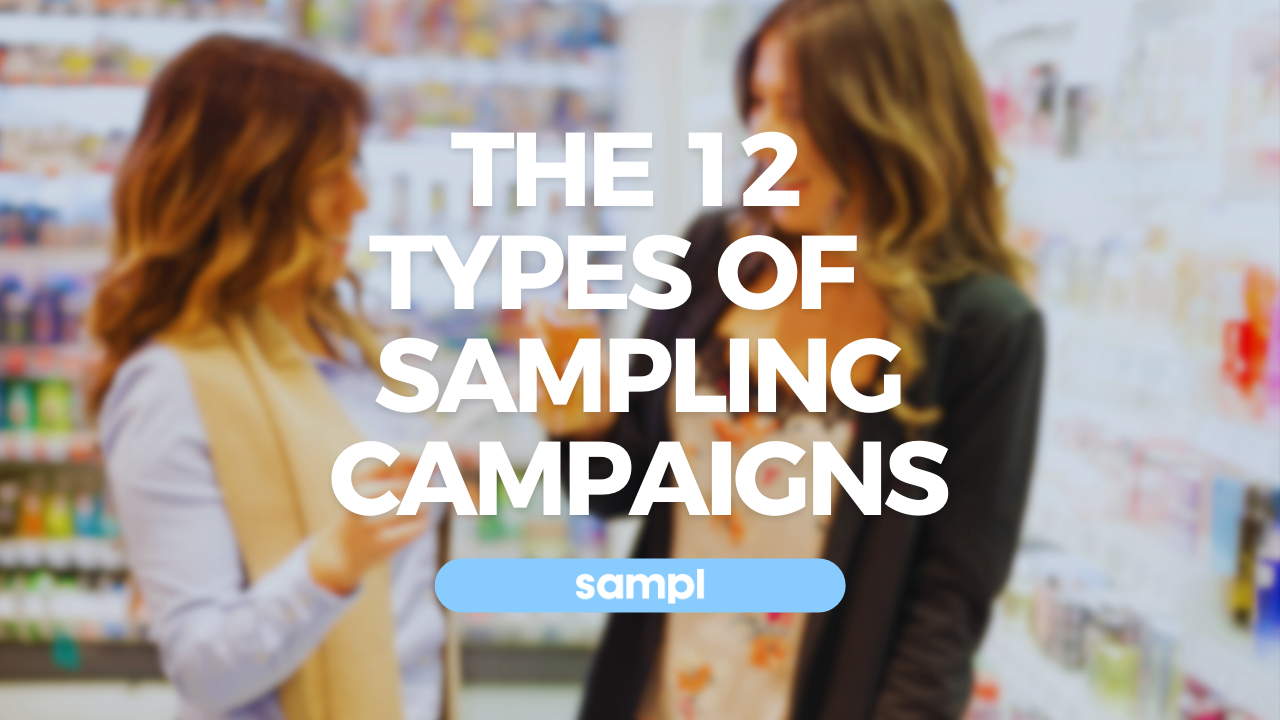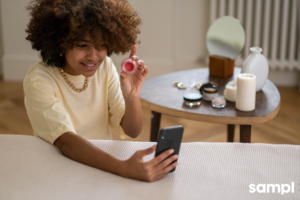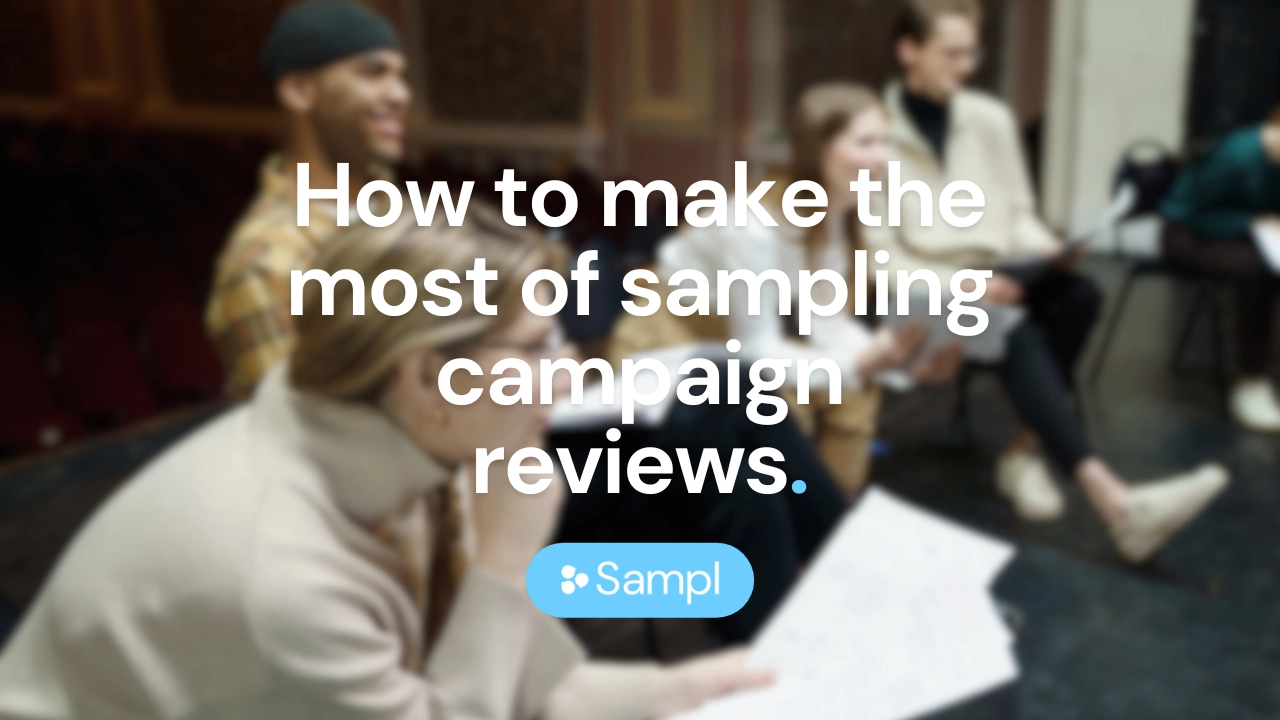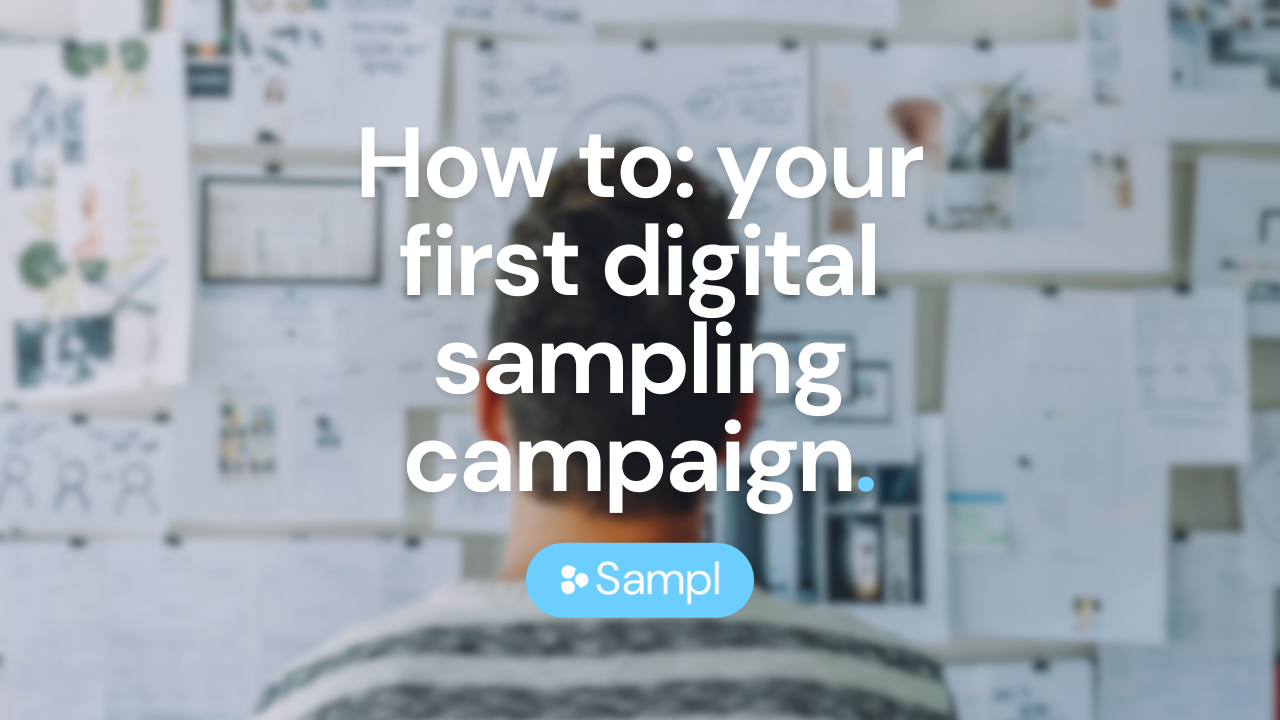
Are you ready to elevate your product sampling campaigns and leave a positive mark on your target audience? Product sampling continues to be a key part of any team’s product marketing strategy, offering businesses an opportunity to create meaningful connections with potential customers. However, with a range of strategies available, which one will best suit your brand’s needs and goals?
Whether you’re raising awareness for a product launch, new product development (NPD), generating reviews for online sales, or gaining access to first party data, understanding the product sampling campaign landscape will support your marketing team with their NPD strategy.
In this short guide, we’ll delve into the world of product sampling campaigns, exploring 12 powerful strategies that can take your brand to new heights. From in-store sampling to guerrilla tactics and eCommerce partnerships, each approach has its unique advantages and challenges. With this brief guide, you’ll uncover the secrets of sampling, and understand which methods drive product trials, capture authentic reviews, and boost brand awareness.
Modern product sampling campaigns
1. eCommerce – sampling in your own deliveries
Including samples in your own eCommerce deliveries has become one of the most popular forms of sampling for brands selling direct to consumer (D2C) – in cash terms it’s often free and can be effective for cross selling into different categories or engaging with new product developments (NPD). This method also increases the perceived value of purchases and encourages upselling, but it’s also effectively preaching to the converted so isn’t very effective at attracting new customers, which is a typical goal of sampling.
Combines well with: Digital sampling, Office sampling
2. eCommerce – retailer partnerships
Partnering with external brands is a common solution to finding new customers through eCommerce. Collaborating with partner brands to distribute samples alongside their orders has found increased interest from brand marketing teams. Producing product sampling campaigns through partnered brands can allow for reaching a vast audience. Be aware of the potential challenge around ensuring relevance and actual sample usage; how many samples get missed among the excitement of a new purchase arriving?
Combines well with: Digital sampling, CRM sampling
3. Digital sampling campaigns
Digital Sampling enables marketing teams to leverage wider marketing activities, getting samples into the hands of relevant consumers while delivering highly personalised sampling experiences. Advantages include the ability to generate high quality reviews at scale, produce rich first party data and uncover masses of actionable insight via real-time reports. However, due to each sample being shipped individually it can be cost prohibitive for larger format products with low price point or a low life-time value (LTV).
Combines well with: eCommerce sampling, CRM sampling

4. Food delivery sampling
Brand and Marketing teams can look to sample products alongside food deliveries like Deliveroo, JustEat and UberEats to engage hungry customers. This allows a campaign to tap into an often harder to reach younger demographic – online audiences actively spending money. However, it can be challenging to ensure the sample’s appeal and relevance to stand out amidst the main order and the opportunity to engage directly with the recipient are often limited.
Combines well with: Office sampling, Website & Social media sampling
5. Sampling communities / freebie clubs
There are tons of sampling ‘communities’ and ‘freebie clubs’ that people join often with the express wish of receiving lots of free samples. These can be a simple route to exposure and can generate insight into different audiences, driving trials and capturing reviews. Given the frequency at which many of these members are sent free samples it’s worth considering how ‘engaged’ they may truly be with the products they’re receiving and how likely they are to come long-term customers if they’re receiving freebies constantly.
Combines well with: eCommerce sampling, CRM sampling
6. Website & social sampling
Brands are often looking to their own sites and social media to offer free samples and engage consumers that are interested. This can be a great way of rewarding existing audiences but it’s really important to consider how to manage the risks of such offers being shared far and wide. We’ve heard many stories from brands that have seen all their samples disappear quickly after being shared, with limited return from the campaigns. If you want to do this method, we recommend partnering with an experienced sampling partner that can help you mitigate these risks.
Combines well with: Digital sampling, eCommerce sampling
7. CRM Sampling
Inviting existing customers and contacts to opt-in via email can be a really thoughtful gesture that targets people who might be interested in trying new products and can reward your most engaged leads. This owned-channel approach has the advantage of low cost, and can help strengthen customer relationships and grow spend between categories. However, it is limited to existing contacts, so won’t expand your audience. There’s also a possibility that the samples can get picked up by freebie sites if not managed correctly, so we recommend being careful when using this method.
Combines well with: Digital sampling, eCommerce sampling
Traditional product sampling campaigns
8. In-store sampling (own store)
Sampling within your own space immerses shoppers in the sensory experience of trying products directly in a space where they can purchase items. This method allows you to benefit from high conversion rates as customers get hands-on with your offerings while surrounded by your brand. However, this approach may not scale well to a broader audience, especially for online-first brands, and of course, brands without stores.
Combines well with: Experiential sampling, eCommerce sampling
9. In-store sampling (retailer)
Through retailers, you can reach potential customers at points of sale through manned sampling stations in retail stores. Marketing teams can enjoy the advantage of proximity to purchase decisions and potential conversions, but should be cautious of high costs, limited audience targeting, and the lack of actionable insights.
Combines well with: Digital sampling, Office sampling
10. Experiential sampling campaigns
Distributing samples while working with experiential marketing agencies can create captivating events and installations in high-traffic areas to provide an immersive brand experience. These types of campaigns achieve a lasting impact on participants, but product marketers should be prepared for higher costs and challenges in measuring return on investment (ROI).
Combines well with: In-store sampling (own store), Digital sampling

11. Office sampling campaigns
Office sampling allows companies to send samples directly to offices, engaging working professionals during their busy routines. Using this strategy allows marketing teams to benefit from a scalable approach and valuable feedback. However, personalisation and waste management can be daunting tasks so relying on highly experienced teams when executing office sampling is a must.
Combines well with: In-store sampling, Experiential sampling
12. Guerrilla sampling
Guerilla marketing sits within a grey area, and is generally therefore somewhat cheaper than experential marketing due to lack of licensing. This strategy allows products to reach passersby with unannounced samples in public spaces, garnering attention and driving trial. Due to the nature of Guerilla sampling it’s not suitable for every brand’s risk appetite and the potential difficulties of measuring impact can be hurdles that marketing managers should consider before implementing this approach.
Combines well with: Experiential Sampling, eCommerce sampling
We hope this list has helped illuminate the key types of product sampling campaigns, and as you explore these sampling strategies, ensure you consider your brand’s unique identity and objectives. Each approach has its merits, but combining them strategically will help you unlock the full potential of your sampling campaigns. Remember, in the world of sampling, thoughtful planning and execution lead to genuine success, and audience satisfaction!
If you’re interested in getting tailored sampling advice for your business, make sure to reach out to our team by booking a call with us here, or emailing us at sayhello@sampltech.com.


